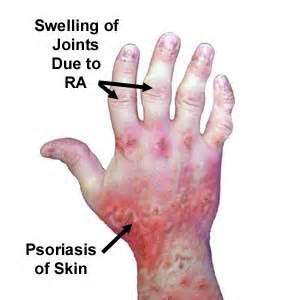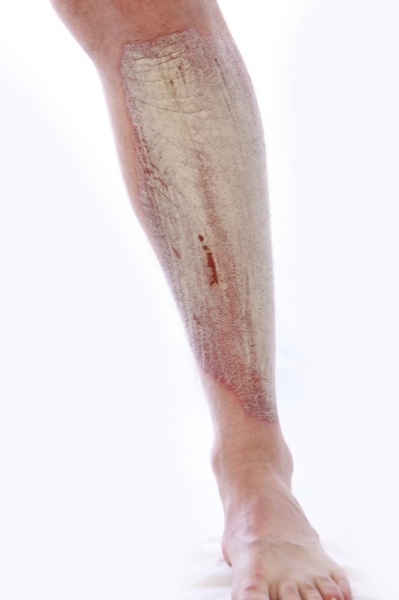Psoriatic Arthritis: Symptoms and Diagnosis of Arthritic Psoriasis
Psoriatic arthritis is a type of arthritis that has become inflamed by the presence of psoriasis. The National Psoriasis Foundation estimates that approximately 30% of psoriasis sufferers will develop this type of psoriasis.
Signs and Symptoms of Psoriatic Arthritis
 Psoriasis arthritis
Psoriasis arthritisThe most common symptoms include:
- joint pain, swelling or stiffness
- red joints that may feel warm
- pain in the feet and ankles
- changes in fingernails or toenails
This type of Psoriasis can remain relatively mild, but in many cases it progresses to a severe and destructive disease. Typically, periods of outbreaks alternate with states of remission. Prolonged inflammation could result in permanent joint or bone damage, that is why early diagnosis and treatment is crucial.
The exact cause is not known, but several studies suggest a genetic connection.
Diagnosis
Symptoms of the psoriatic-type of arthritis resemble
many other diseases. There is no one test to positively identify the disease,
but a doctor specializing in joint diseases may be able to accurately diagnose
the condition with a variety of tests.
Contributing factors to a positive diagnosis include:
- a family history of the psoriatic-type of arthritis, or a patient with psoriasis
- testing negatively for rheumatoid arthritis
- arthritis in the upper finger joints
- eep ridges or pits in toenails or fingernails
- x-rays indicating changes in the joints
Other symptoms separating psoriatic arthritis from other types of arthritis may include inflammation at the back of the heel or on the soles of the feet.
Classification
This Psoriasis is classified
into five main types:
- Asymmetric – approximately 70% of patients are affected by this type. It is usually mild and does not show up in the same joints on both sides, meaning, if your right heel is affected, your left heel won't be. Usually less than three joints are affected.
- Symmetric – approximately 25% of the cases are this type. Joints on both sides of the body are affected simultaneously. Nearly half of the people with this type are left completely disabled.
- Arthritis mutilans – this type is extremely destructive and deforming. Luckily, less than 5% of patients are affected. The condition progresses over months or years and causes severe damage to the joints.
- Spondylitis - usually characterized by stiffness in the neck or spine, but may affect feet and hands, as well.
- Distal interphalangeal predominant – approximately 5% of patients have this type. It is characterized by stiffness and inflammation in the upper fingers. Visible changes appear in fingernails and toenails, as well.
Treatment
Although psoriatic arthritis is a
combination of two diseases, they are usually treated separately. In most
cases, your doctor will concentrate treatment on the inflammation and arthritis
aspects.
Generally, treatment involves anti-inflammatory medications combined with exercise. If the inflammation continues to progress, stronger medications may be prescribed.
In less severe cases, you will be given an exercise program to follow at home. If the disease has progressed too far, you will need the help of a physical therapist. Programs are designed based on the physical capabilities of the patient.
Either way, you will need to start with warm-up exercises, a hot bath or heating pads to help relax the muscles. Exercise will help strengthen joints and should be done regularly.
There is no cure for psoriatic arthritis, but proper care can make it easier to live with.
Psoriatic Arthritis - get more information about Type of Psoriasis
National Institute of Arthritis and Musculoskeletal and Skin Diseases
 Psoriasis en la pierna
Psoriasis en la piernaPágina de inicio
Mapa del sitio
Mapa del sitio en orden alfabético